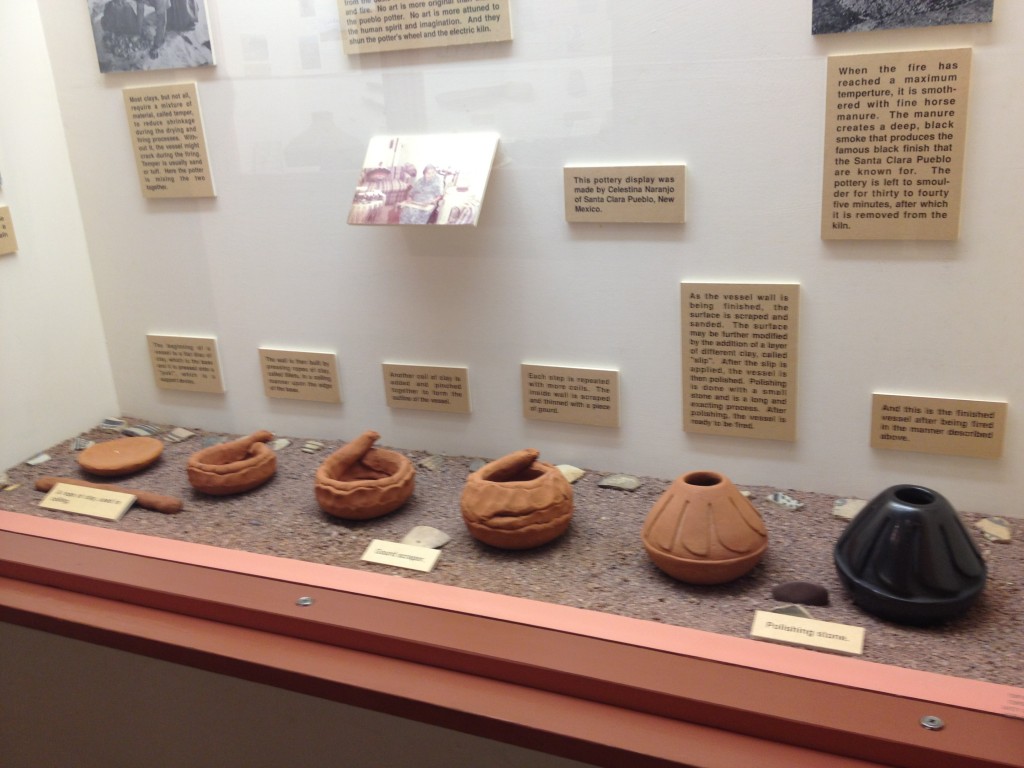The Southwest studies house is located a few feet away from the Tutt Library, tucked away in the northern corner of campus. Surrounded by a full garden of what I can only assume are plants native to the southwest, the small white stucco building is where I will be spending the next six weeks in my FYE course: The (Greater) Southwest: An Introduction.
As one, who hails from the East Coast, this class affords me an opportunity to begin to get to know my new home in an intensive, in-depth historical and cultural way. I not only find the history of the American west to be fascinating on its own, but the fact that we are learning about people, events and cultures that inhabited our own backyard at CC is an incredibly valuable experience.
The first day of class we arrived having read an excerpt from Raymond William’s Marxism and Literature. The dense, but interesting, reading about the definition of the word “culture” was definitely a needed wake up call from the mental vacation of summer. During that first day of class we discussed the meaning of the word “culture,” “society,” “civilization” and other key terms that we would be applying to our studies of the southwest.
The next day we all came into class having read another reading about the Spanish conquest of Mexico, focusing mainly on the Aztec Empire. Armed with new terms and more refined definitions of concepts from the day before we engaged in an exciting class learning about the history of Mexico, before the Europeans arrived. I think that many in our class were astonished and amazed to learn about the intricate cultures and vast empires of the ancient civilizations. I know that I had previously studied the Maya and Aztec in my high school, but it was new fascinating to learn about the many other peoples that had risen and fallen before them that had been previously excluded from my education. One particular group that interested me was the Olmecs, a civilization of skilled artisans and advanced agricultural techniques, which reached its height hundreds and hundreds of years before the Spanish arrived.
We also read for homework about the Puebloan peoples, focusing mostly on their daily life, societal and familial structure as well as religious beliefs. Although we did not have time to discuss this reading in class [thousands of years of Mexican history takes up more time than you think!], we were well prepared for our first field trip to the Anasazi or Ancient Pueloan Cliff Dwellings in Manitou.
This morning the whole class, with our professor of course, loaded into a CC bus and drove ten minutes away to the Cliff Dwellings and museum. Although the ruins were not originally from Manitou, having been relocated in the early 1900s from Mesa Verde, it was still a fascinating and worthwhile look into the physical dwellings of the peoples we had read so much about. Simply ducking under low beams and walking into the dimly lit stone rooms allowed for me to really get a first hand sense of the ancient culture.
We were given almost the full three hours to explore the dwellings, look at the museum, do a little shopping at the gift store as well as reflect upon our experience there. Although it was a very worthwhile experience to see, feel and physically travel to the Cliff Dwellings, I couldn’t help but leave wondering about the ethics of this site. The fact that these ruins were moved from their original location got me wondering how this impacted my experience there as well as what kind of messages this action sent to the site’s visitors about preservation and the Ancient Pueloan culture. I cannot wait for tomorrow where I can bring up these questions and listening to my peers’ reflections as well as talking about our most recent reading about the fall of Inca Empire…


